Tzatziki
on Aug 20, 2021, Updated Jun 11, 2025
This post may contain affiliate links. Please read our disclosure policy.
The most popular, versatile, and refreshing Greek condiment and dip. Tzatziki's made with chopped cucumber, yogurt, garlic, and fresh herbs.
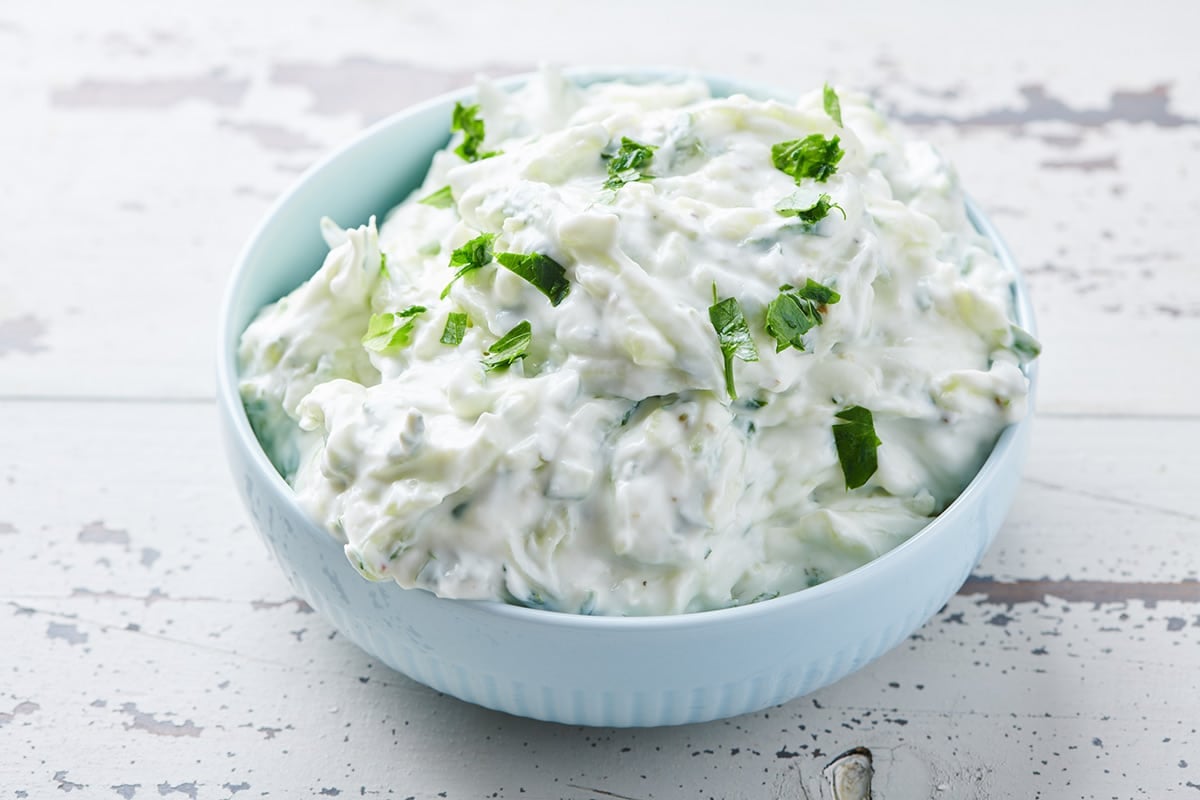
Greece is well known for its dips and sauces, and perhaps the most popular condiment/sauce — and the most familiar to us non-Greeks — is tzatziki. It is creamy and refreshing at the same time, with a nice, delicate crunch from the shredded cucumber.
The main ingredients in tzatziki sauce are cucumber, lemon juice, yogurt, and garlic, and usually some fresh herbs. Often, fresh herbs are added, such as dill, oregano, mint, parsley, or a combo of herbs. For this recipe, I’ve included oregano and mint, but feel free to mix it up! It’s a Greek staple, but it can be served with everything Mediterranean. Enjoy tzatziki as a dip with pita bread, as a condiment with grilled fish or meat, with souvlaki, or as a sauce for gyros.
By signing up, you agree to our Privacy Policy.
Make extra to serve up with pita chips, or perhaps to dollop on a piece of grilled chicken or grilled salmon or grilled halibut. Leftover roasted meat, thinly-sliced and piled into a pita with tzatziki, makes a great makeshift gyro — you can do this with roasted leg of lamb, beef, pork, or even roast turkey.
What's In This Post?
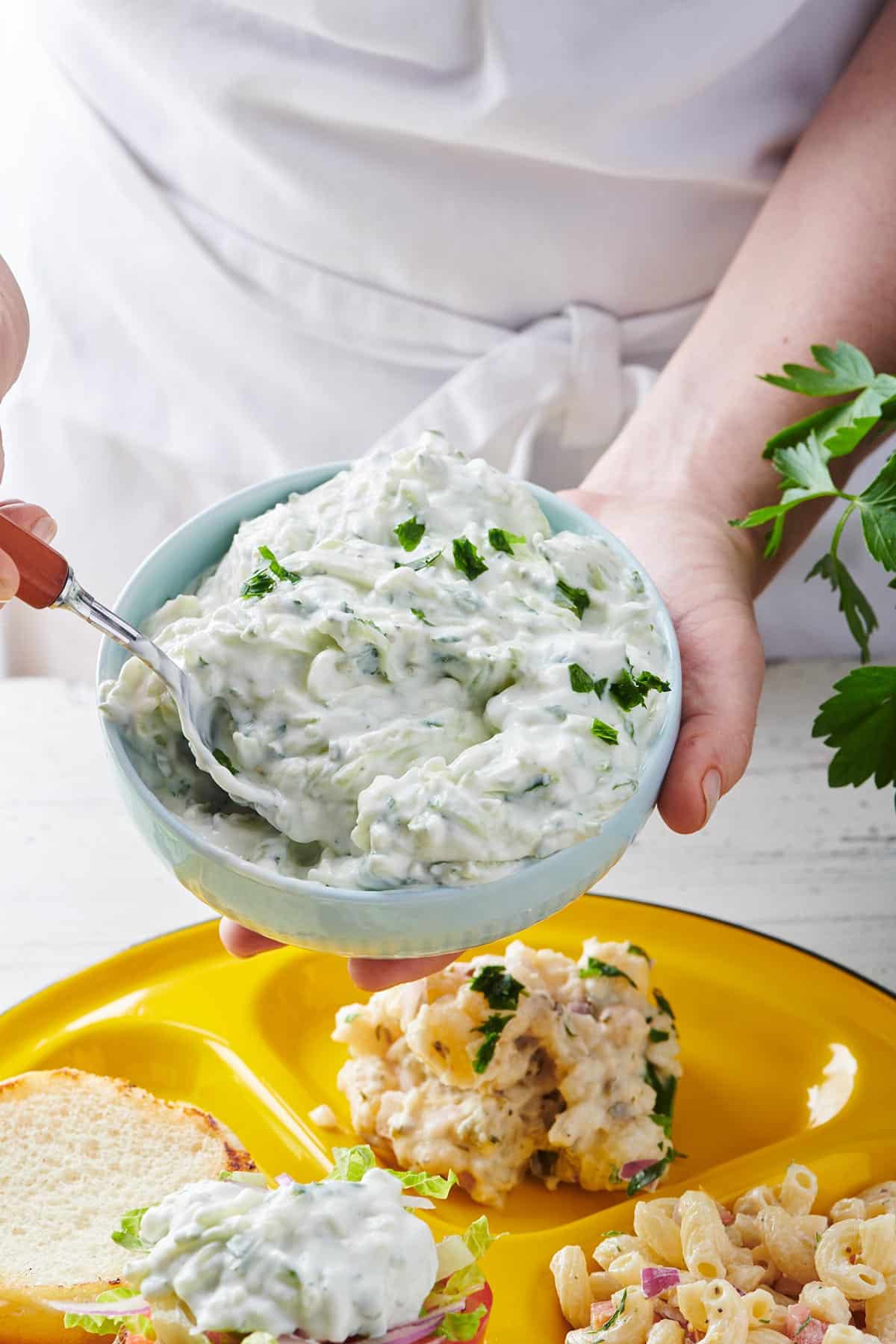
Tzatziki Tips
- If you have a choice, go for a seedless cucumber: yes, there are still seeds in a seedless cucumber, but they are smaller, and there are fewer of them. These usually have thinner skins, as well, so there is no need to peel them. You could also do this with baby cucumbers.
- Greek yogurt is thicker, creamier, and has less of a tart-tangy taste than regular yogurt. It is strained to remove the whey from the yogurt, which gives it its thicker consistency. You can use it a substitute for sour cream, cutting down on the fat and calories in a recipe. It is full of protein and available in fat-free, 1%, 2%, and whole versions. As with milk, the more fat, the creamier the texture and the richer the flavor. Most Greek yogurt available here in the States is made with cow’s milk.
How to Make Tzatziki Sauce
- Prepare the cucumber: Peel the cucumber if you wish. Slice it lengthwise, and scrape out the seeds.
- Grate the cucumber: Use the large holes on a box grater or the grating blade in a food processor.
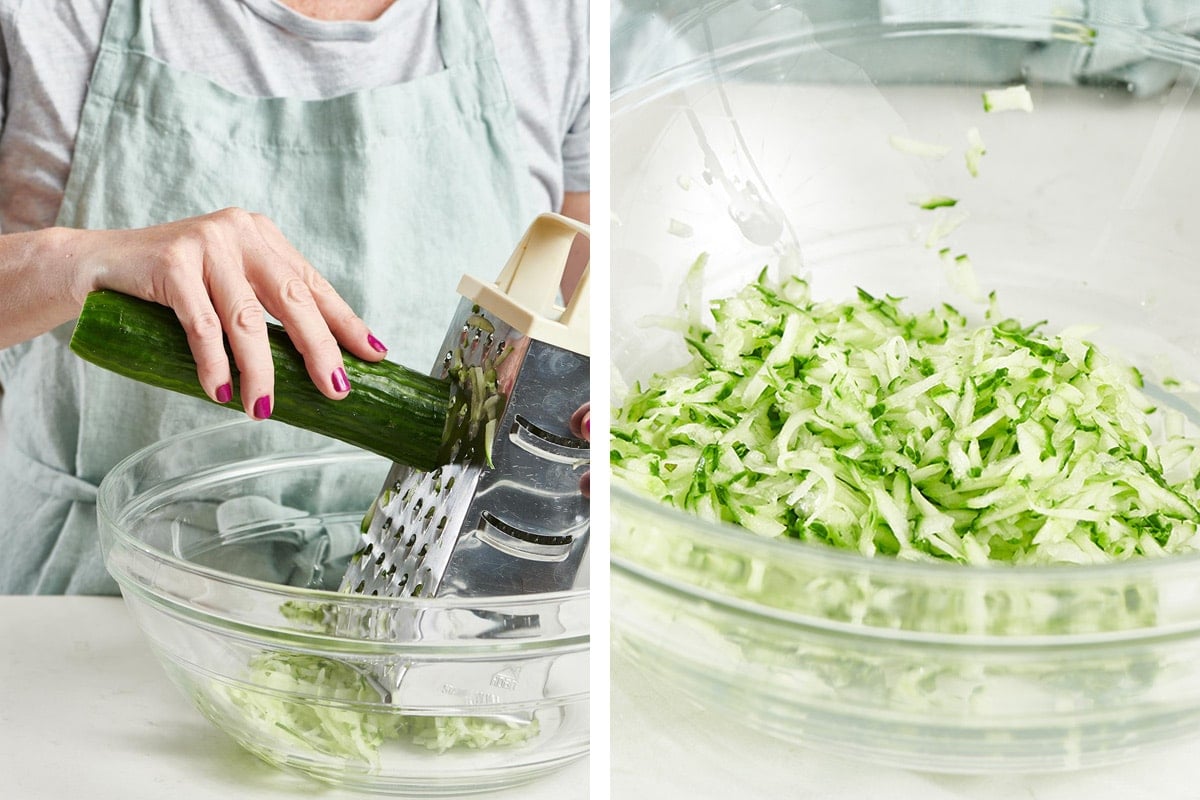
- Salt the cucumber: Toss the cucumber with kosher salt and place in a strainer over a bowl or in the sink. Let rest for 10 to 30 minutes.
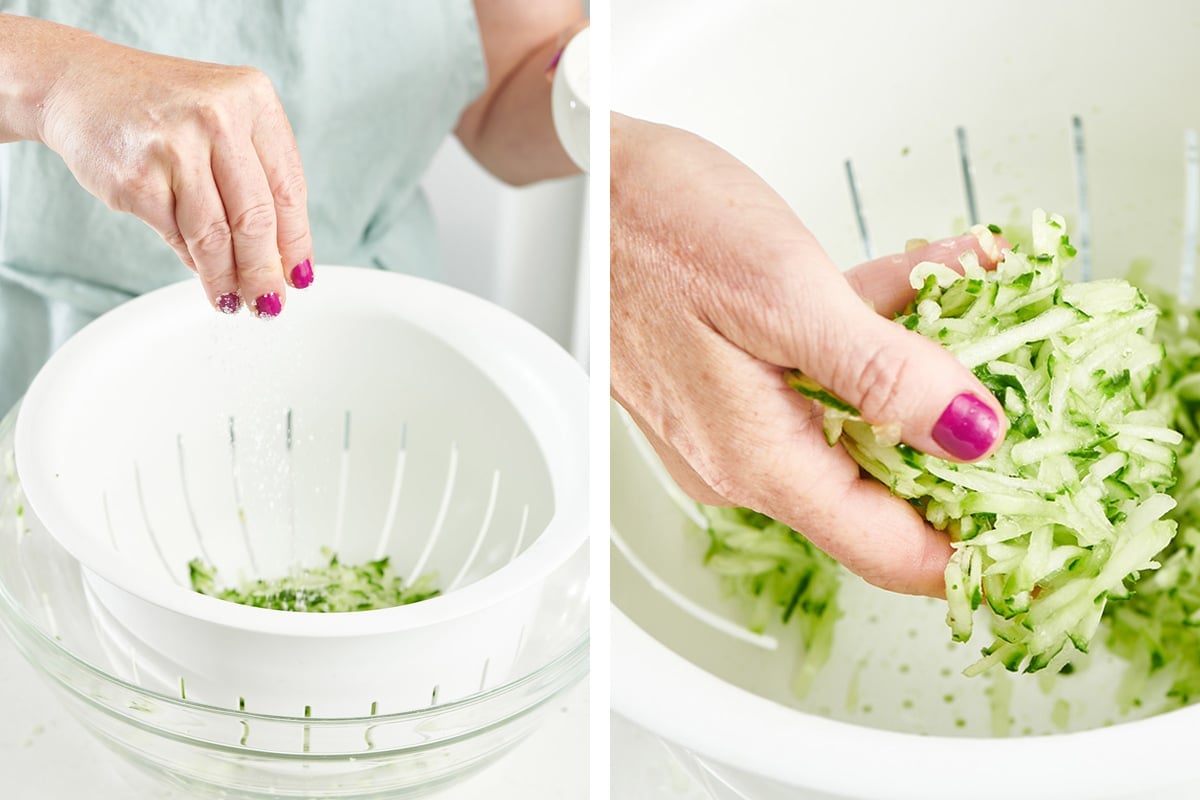
- Squeeze out liquid.
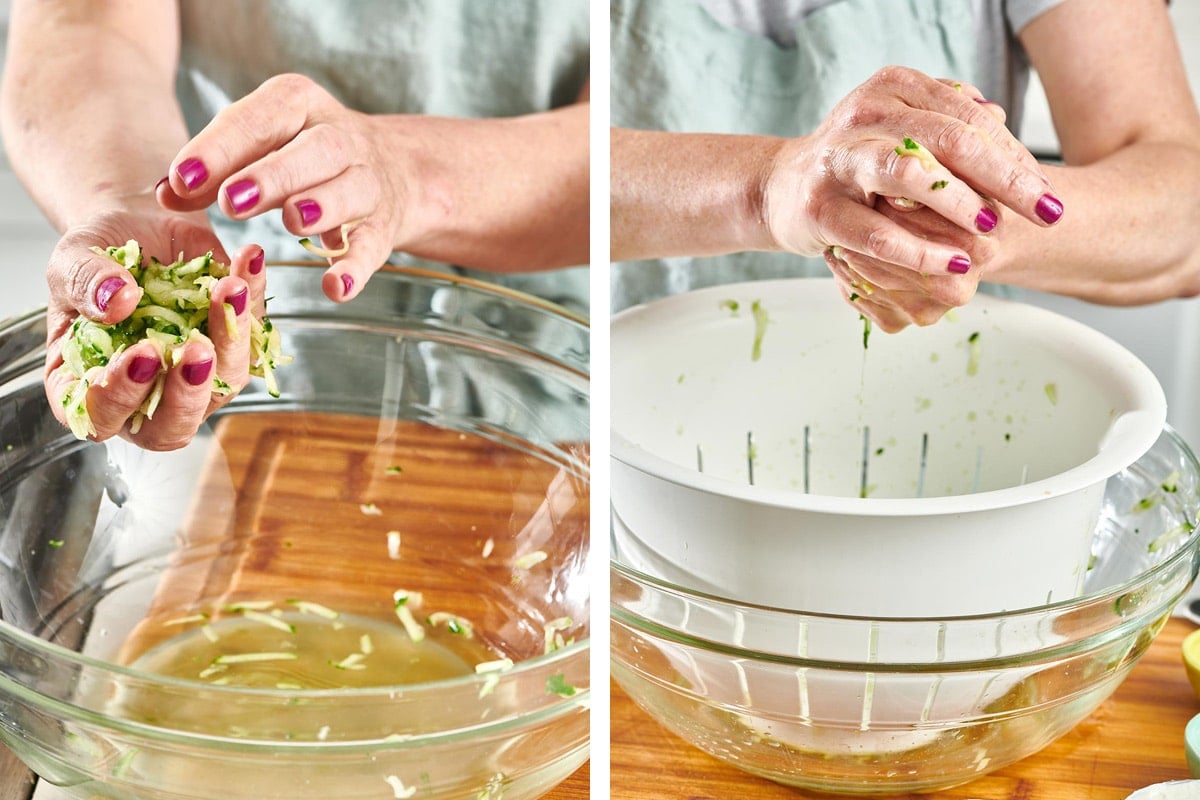
- Add remaining ingredients: Combine the cucumber with the yogurt, lemon juice, olive oil, oregano, mint, and garlic. Season with salt and pepper (don’t forget that you salted the cucumbers at the beginning!).
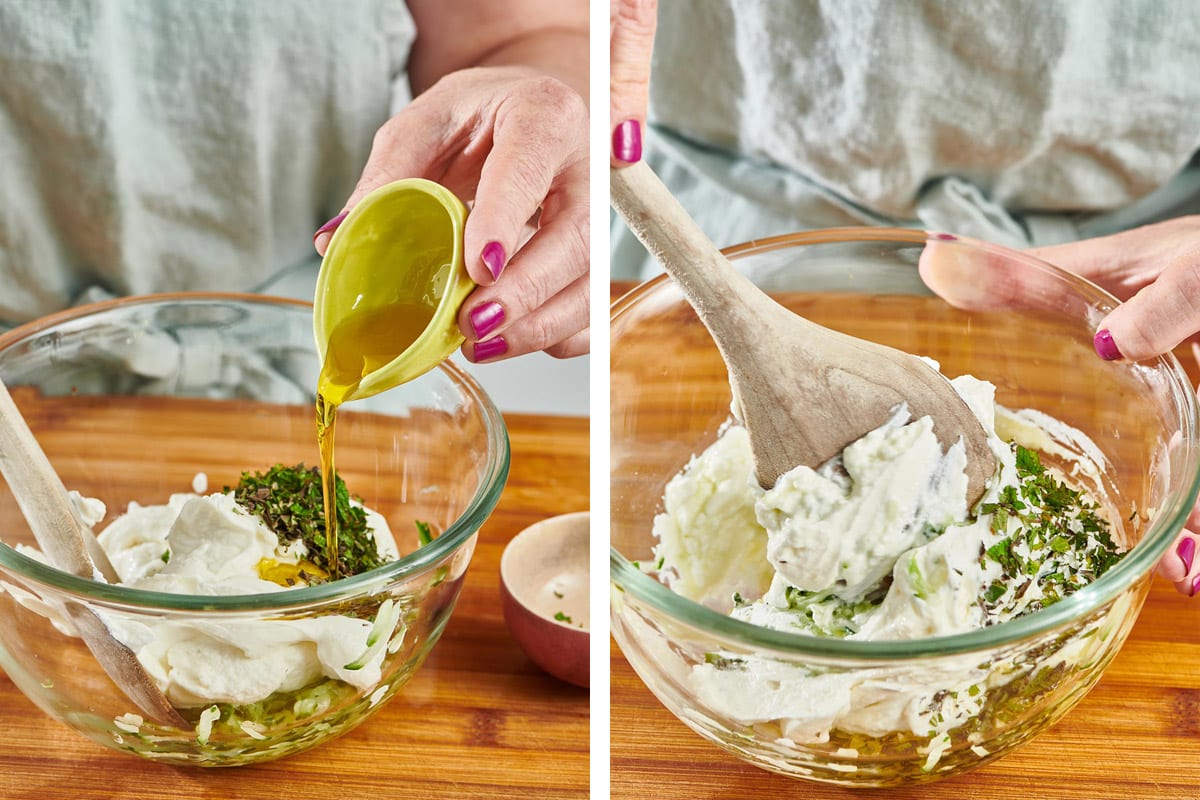
Storage
Tzatziki doesn’t keep very well. Eat within a day of making, if possible, as the mixture can start to become a bit watery from the cucumbers.
What to Serve Tzatziki With
Tzatziki is a great dunk for any kind of raw vegetable, and also a great companion to crunchy pita chips or soft pita wedges. It’s excellent with fish and seafood, and very traditionally served with lamb. It’s also terrific on sandwiches like turkey burgers or gyros. Think of it as one of the more versatile additions to a meal — it really is a dip, a sauce, or a condiment, depending on how you use it.

Pin this now to find it later
Pin It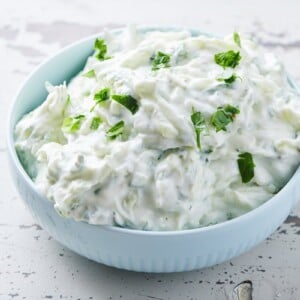
Tzatziki
Ingredients
- 1 medium (10-ounce or so seedless cucumber; peeled if the skin is thick)
- Kosher salt
- 1 cup plain Greek yogurt (preferably whole)
- 2 teaspoons lemon juice
- 1 teaspoon olive oil
- 2 teaspoons minced fresh oregano
- 1 teaspoon chopped fresh mint
- ½ teaspoon finely minced garlic
- Freshly ground black pepper (to taste)
Instructions
- Slice the cucumber in half lengthwise, and scrape out the seeds with a teaspoon. Grate the cucumber using the large holes on a box grater, or the grating blade in a food processor. Toss the cucumber with ½ teaspoon kosher salt and place in a strainer over a bowl or in the sink. Let rest for 10 to 30 minutes.
- Use your hands to squeeze the cucumbers to press out any extra liquid, then place in a medium bowl. Add the yogurt, lemon juice, olive oil, oregano, mint, and garlic. Stir well, and add pepper and any additional salt as needed (don't forget that the cucumbers were salted at the beginning!).
Notes
Nutrition
FAQs
There are many versions of this Greek dip. Typically, most tzatzikis are made with a base of Greek yogurt and grated cucumber, to which garlic, lemon juice, and a mixture of fresh herbs are added, plus salt and pepper to taste.
In America, the word “tzatziki” is pronounced “tza-tzee-key.”
Some cooks say yes, some say no, so at the end of the day, it’s your call. I like to leave the skin on the cucumber unless it’s quite thick. The extra pop of dark green color that it brings to this dip is very pretty.
Tzatziki has a super refreshing taste that comes from fresh cucumbers. It usually has a little bit of a bite to it, coming from the garlic and lemon. Another layer of flavor comes from whichever herbs you add to the mixture.




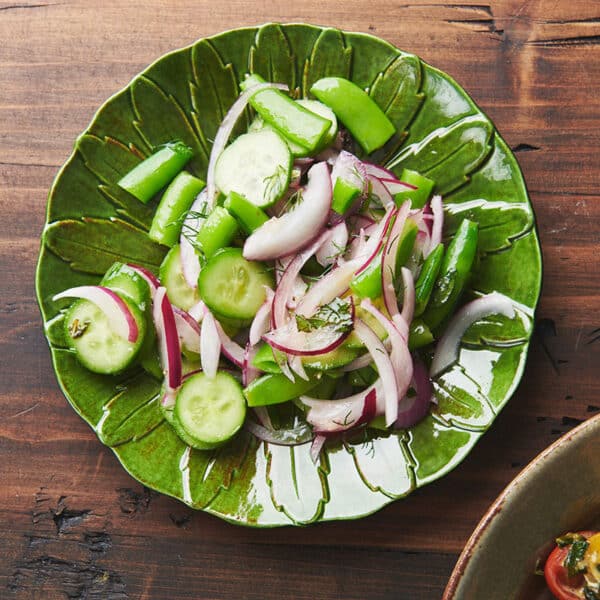
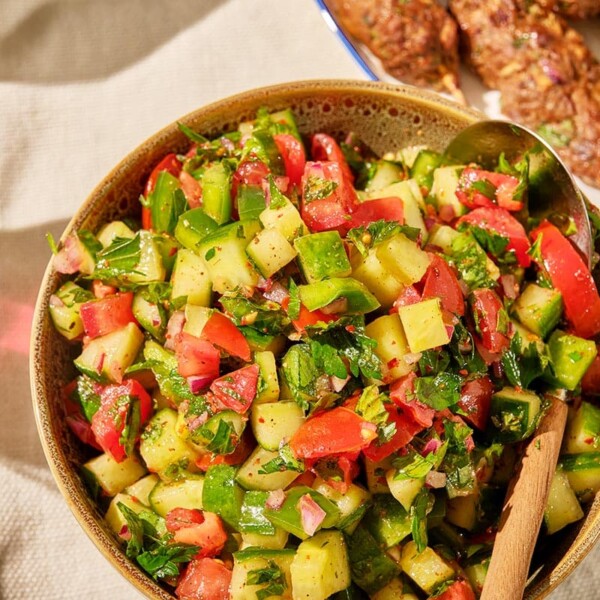










This lives in my fridge to be eaten on torn pita, pita chips, alongside grilled chicken or lamb, so very good.